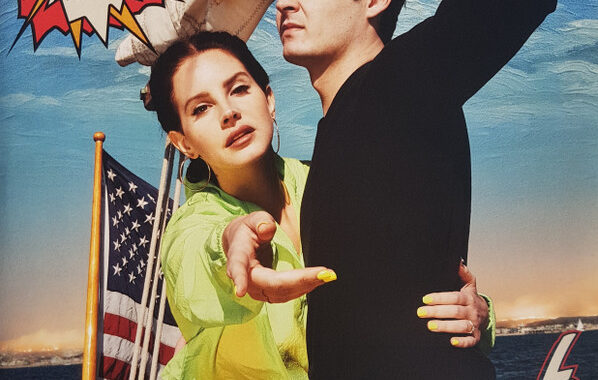With his sentimental illustrations, the artist Norman Rockwell gave an almost patriotic view of American society. Lana Del Rey also gives a view of the United States albeit with many personal memories, for instance about the time she still lived in New York, was addicted to alcohol or when she was not yet famous but instead the budding singer Lizzy Grant. There is despair in her lyrics, but even more expressions of desire. Though Del Rey is now world-famous and ubiquitous, she would rather try to get away and go to “the California sun and movie stars,” a theme prevalent in the naming of the song How To Disappear.
A slow jazz waltz is her only companion and escaping turns out to be impossible because, in her own lyrics, “no one’s going anywhere.” Does Del Rey refer to herself when she mentions David Bowie’s Life On Mars? This song is about someone trying to escape from reality, stepping out of “her sunken dream,” but after a visit to the movie theatre realises her surroundings are anything but changed.
Interestingly, Norman Fucking Rockwell! marks the first album on which the singer is not depicted on the cover with a car nearby. On a sailing boat, she is trying to grab something while she clings to a man in a black sweater. The young man in the picture, it turns out, is Jack Nicholson’s grandson. Such a yacht is a status symbol for wealthy people, but Del Rey uses the vessel to escape a fire raging in the background. The smoke flames probably come from the big forest fires that ravaged California in 2018. “L.A. is in flames” she sings on The Greatest. Here too, it appears her life is not in a good place.
“‘Cause your just a man. It’s just what you do. Your head in your hands”. Many songs are about men who can no longer manage things, who don’t know how to maintain a relationship, men that disappoint, just like Kanye West who is “blond and gone” since his admiration for Donald Trump. The last lines in The Greatest she mutters so intensely sad that it makes you humble. Due to its overwhelming simplicity another song is perhaps the highlight of the album, a small version of a valley of tears. In the perception of Lana Del Rey this is called a Love Song.
The metaphors, the sometimes elusive symbolism and the countless references to popular American culture, especially rockmusic, remain undiminished the artistic trademark of Lana Del Rey. In that respect, her albums are almost a musical variation on Pop Art. However, this ambivalence she now links in a compelling and sometimes harsh way to personal events from her past and to the present. The music is constantly introverted neo-noir creating just enough atmosphere instead of serving up bite-sized chunks. This fits perfectly with typical Del Rey oneliners like:
“You fucked me so good that I almost said I love you”
“If he’s a serial killer, then what’s the worst that can happen to a girl who’s already hurt?”
“I like to see everything in neon”
Listening to this record is like watching the opening scene in David Lynch’s Blue Velvet. Sweet colours of hope and innocence slowly but firmly tucked away in an ominous grass lawn. Del Rey finally turns off the light of the American Dream. Groping in the pitch-dark, she goes, perhaps against better judgment, in search of a last glimmer of hope. Then she finds something to hold on to at the last minute. Hope Is A Dangerous Thing For A Woman Like Me To Have – But I Have It is probably one of the most poignant songs ever made. Recorded in one day, live in the studio. Producer Jack Antonoff’s advice: “Listen at night alone”.

